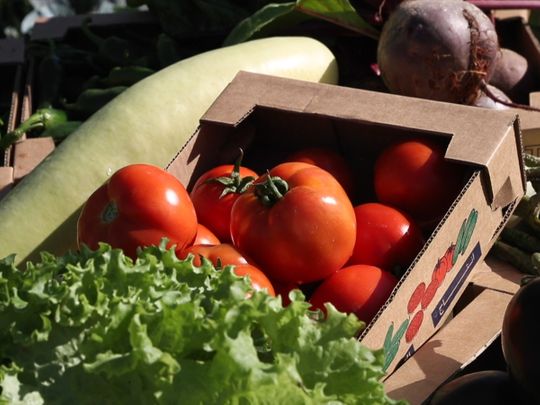
Dubai: UAE came first among Arab countries and 19th globally in the ‘Food System and Economic Resilience’ ranking, according to the Global Food Security report released on Wednesday by Deep Knowledge Analytics.
Saudi Arabia, the UAE and Qatar were the only Arab countries in the top quartile of ‘Access to Food’ ranking within the index.
“The global food system has been destabilised by the Russian attack on Ukraine,” said the report. “Levels of hunger and acute food insecurity in sub-Saharan Africa, the Middle East, and North Africa (MENA) region, Latin American and South Asia are expected to increase further by the end of this year.”
The report, which assessed the drivers of food insecurity in 2022, found that high income countries are the most food-secure nations in the world. The US topped the ‘Food Security Index’ with 7.9 points out of 10. The report concluded that while developed, food-secure countries will not face hunger, the deficit of certain food products and high inflation will be felt.
Sub-Saharan and MENA region countries dominated the bottom quartile of the index, with Somalia scoring the lowest at 2.97 points out of 10. “These countries have not demonstrated the capacity to build food security through national policies and are affected by conflicts, weather conditions and by economic shocks.”
“The role of technology in achieving global food security is more important than ever - AI and real-time monitoring will be helpful to tackle food security issues by enabling companies to develop food management solutions to optimise manufacturing processes and supply chain operations,” said Alex Cresniov, Director of Deep Knowledge Analytics.
As a response to the decrease in global supply, several export restrictions are being imposed to protect national interests. Several food-secure countries have announced and implemented national strategies specifically aimed at tackling food insecurity in 2022, but that does not apply to most countries in the developing world.
The number of countries enacting food-export restrictions has risen by 25 per cent, bringing the total to 35 within a few weeks in 2022. As of the end of March, 53 new policies affecting food trade had been adopted, 31 of which restricted exports and nine curbed wheat exports.
Major food exporters such as Argentina, India, Indonesia, Kazakhstan, and Russia, as well as smaller exporters such as Algeria, Turkey, and Serbia have introduced food export restrictions.
“Devising a food security strategy to counter issues of domestic food insecurity must be considered by governments across the world, especially during such times of uncertainty,” said Alex.
Way ahead
The report said that governments need to weigh up main factors shaping food security such as food access, affordability, production, and presence of crisis situations globally.
The report also identifies countries at risk of humanitarian emergencies, which could overwhelm their current national response capacity, and therefore lead to a need for international assistance.
Food spending
The more developed a country, the less income is spent by its citizens on food. Developing countries will have even greater food insecurity and hunger levels with most vulnerable paying more for less food.
There are only eight countries in the world that spend less than 10 per cent of their household income on food. Four of these are in Europe: The UK is third at 8.2 per cent, followed by Switzerland at 8.7 per cent; Ireland spends 9.6 per cent, and Austria – 9.9 per cent. The remaining four countries are spread across the globe.
The US spends the least at 6.4 per cent, and Singapore records the second lowest amount at 6.7 per cent.
Nigeria spends over half of household income on food, and there are nine other countries that spend over 40 per cent on food. Four of them are in Africa, and four are in Asia. Guatemala is the only South American country to appear in the list, spending 40.6 per cent of its household income on food.








